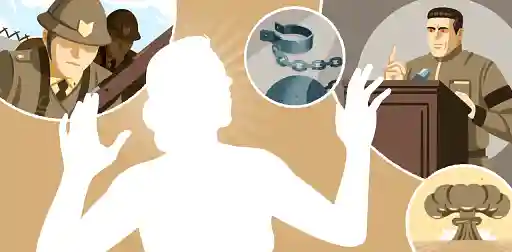Posted on Aug 29, 2018
How to Write a Fight Scene
About the author
Reedsy's editorial team is a diverse group of industry experts devoted to helping authors write and publish beautiful books.
More about the Reedsy Editorial Team →About Savannah Cordova
Savannah is a senior editor with Reedsy and a published writer whose work has appeared on Slate, Kirkus, and BookTrib. Her short fiction has appeared in the Owl Canyon Press anthology, "No Bars and a Dead Battery".
Learn more →When tensions are high, honor is questioned, and lives may even be at stake, you know what time it is: time for a killer showdown. You’ve been building toward this explosive moment for pages, maybe your entire book, but now you come to a screeching halt — you have no idea how to write a fight scene!
Fortunately, it’s not as complicated as you might think. Follow these 5 simple steps to write a fight scene that releases story tension, solves inter-character conflict, and satisfies the anxious expectations of your reader all at once.
Step 1. Motivate your players
When was the last time you saw someone start throwing punches out of nowhere? Probably never. Whether it’s over a lifelong grudge or a few heated words at a bar, people need a believable character goal to start a fight in both real life and in fiction.
Here are a few ideas to motivate your characters’ confrontations. Whichever you choose, use it as the catalyst for your fight scene, as well as to add the necessary layers of depth and complexity.
Survival
Survival is an important motivation for any character, but especially for protagonists in horror and dystopian novels. For instance, Katniss in The Hunger Games has no choice but to attack and kill her fellow adolescent opponents if she wants to survive. However, this need to survive can escalate any physical fight, such as the gang rumbles in The Outsiders, where someone could pull out a knife at any moment. Just remember: for survival to be a credible character motivation, the situation has to be absolutely dire.
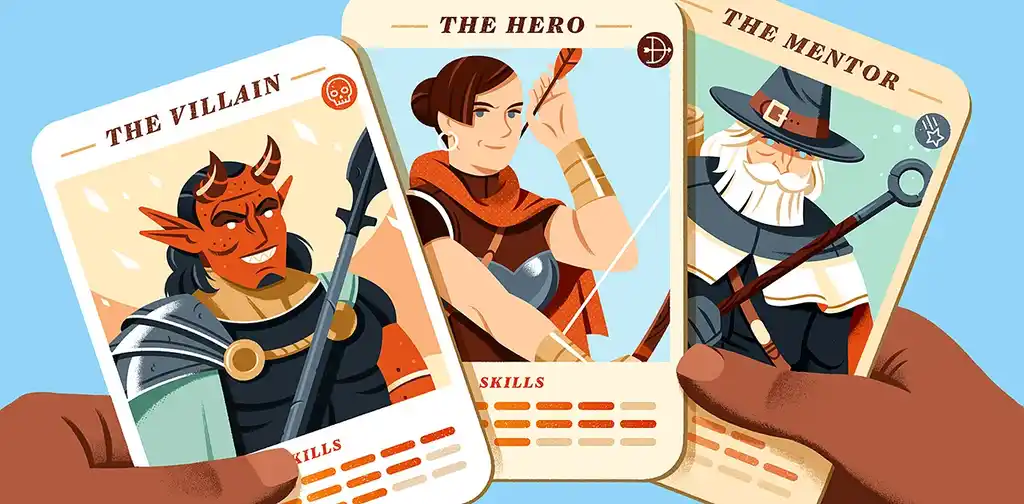
FREE RESOURCE
Reedsy’s Character Profile Template
A story is only as strong as its characters. Fill this out to develop yours.
Protection
Even people who don’t like confrontation will jump to the defense of what they hold dear. This may be a person, an ideal, or a combination of the two — fights in fantasy and adventure plots often involve both. A prime example of a character motivated by the desire to defend others would be Harry Potter, who constantly battles Voldemort to protect the wizarding world. At the same time, he’s also defending the ideals of goodness and inclusion (in opposition to Voldemort’s ideals of “blood purity” and prejudice).
Honor
Honor is the motivation to which we can attribute Shakespearean blood feuds, eighteenth century duels, and yes, modern-day bar fights. While honor may seem like a less drastic motivation than survival, it can make for a very heated encounter — especially if insults are flying beforehand.
Use honor as character motivation for fierce fights between longstanding rivals, such as the duel between Mercutio and Tybalt in Romeo and Juliet. Think about the stakes as your characters perceive them: if they win, will they gain the respect of others? If they lose, what are the consequences? If they are risking their life, is their honor worth it? If the answer is “no,” you should probably use a different motivation.
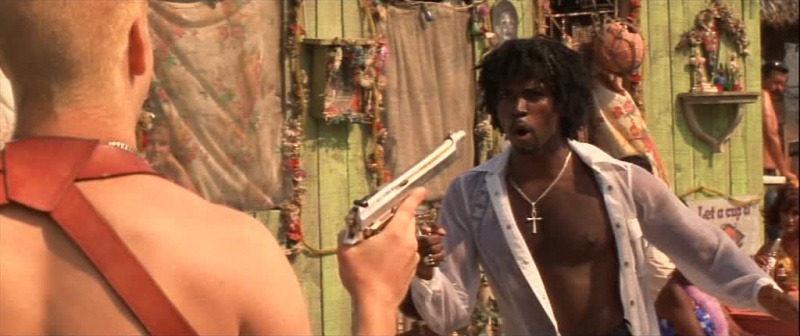
Step 2. Use stimulating descriptions
During a fight scene, you want your reader to feel your characters’ adrenaline coursing through their own veins. To achieve this, you need to describe the fight with all the immediacy and stimulation of someone who isn’t just witnessing the struggle, but is a part of it. If you do a good job, your reader should be left feeling as though they’ve been pummeled — by your prose!
Employ strong verbs
As you describe the action of the fight, use your verbs to color and enhance it. Instead of “hit,” use “pound,” “smack,” “wallop,” or “bash,” depending on the kind of force you want to portray. Also use strong verbs to show how your characters move in relation to each other, and how they navigate their battleground:
- “He stumbled forward, reeling from the hit, swinging blindly"
- “She flew toward me, arms outstretched, ready to claw out my throat”
- “I collapsed to the ground, shaking and crying, as my enemy towered over my weak form”
These descriptions follow the golden rule of showing rather than telling — they paint a vivid picture of each scene without resorting to overwrought adjectives and adverbs. Flowery prose is not recommended! Remember: a fight scene is all about action, so make sure you’re using strong, active verbs to depict it.

FREE RESOURCE
270+ Forceful verbs
Snag this list to magnify your verbal might.
Include sensory details
Though you’ll want to focus mainly on the action of the fight scene, it can be quite powerful to include some sensory details as well. For your reader to perceive the full adrenaline of the scene, they need to be privy to everything your characters experience. This means using all five senses: what they see, feel, hear, smell, and even taste.
- “The wind had been knocked clean out of me; as I lay gasping on the floor, it felt like I would never breathe again”
- “Distantly, I heard the frantic screams of my friends, but these were obscured by the blood pounding in my ears”
- “His fist slammed into my jaw and I tasted a surge of coppery blood”
Notice how these sensory details have been combined with strong verbs for maximum effect. The best and most stimulating descriptions of a fight scene place readers right in the middle of the action, with the taste of blood practically in their mouths.
Step 3. Control the pace
Though you want to give your reader a sense of immediacy in a fight scene, you don’t want to rush through it or bog it down with too much description. In a nutshell, you need good pacing for your book. A helpful rule of thumb for writing a fight scene is that it should take about the same time to read as the encounter would in real life. Most fights only last a couple of minutes, which means you should devote no more than one or two pages to a given fight. Generally, you won't see a fight scene lasting the length of an entire chapter — unless it's a pivotal war that's taking place.
Match the atmosphere
Since you only have a brief space in which to conduct your fight scene, every sentence needs to reflect its mood. You should already be well on your way to this with your verbs and sensory details, but now make sure you’re choosing your words specifically to match the atmosphere of the scene and pace it appropriately.
For example, if you want it to be quick and violent, use punchy verbs and brief descriptions. This is especially important if you have many fights in your story and don’t want to linger. Lee Child frequently employs this pithy style for fight scenes in his Jack Reacher series, such as the prison standoff in Killing Floor:
Instead of counting three I headbutted him full in the face. Came off the back foot with a thrust up the legs and whipped my head forward and smashed it into his nose. It was beautifully done… It must have caved his whole face in.
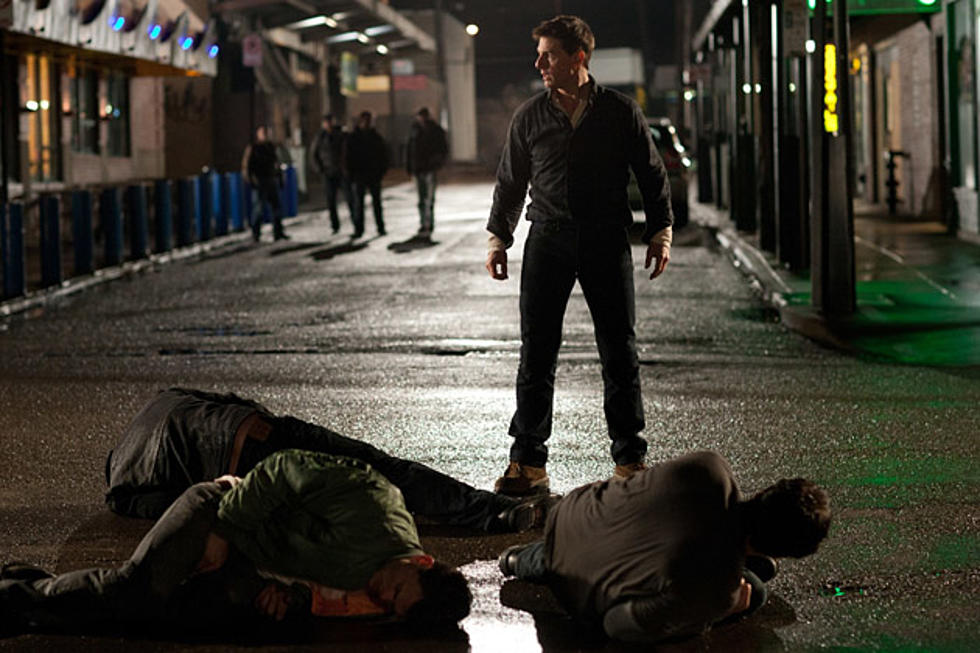
However, if you want the scene to be more melancholy or dramatic, you should draw it out — have characters exchange dialogue, give detailed sensory descriptions of each blow, make it seem like one opponent is defeated until they struggle to their feet in a last-minute comeback.
Basically, even though you’re already using strong verbs and sensory details, you still need to take into account the nature and quantity of those words to establish good pacing.
Avoid “choreographing”
During your fight scene, you may be tempted to use highly technical language — terms like “left fighter’s stance” and “reverse pivot side kick” to illustrate the exact moves your characters are using. However, keep in mind that the average reader will have little familiarity with these terms.
Even if the scene is precisely choreographed in your head, clunky technical phrases like these will only confuse readers, slowing them down and stealing that sense of adrenaline that’s critical to a great fight scene. If you want to pace the scene effectively, stick to simple but powerful phrasing that your reader can quickly absorb.

FREE COURSE
Show, Don't Tell
Master the golden rule of writing in 10 five-minute lessons.
Step 4. Infuse with emotion
By this stage, you have your description and pacing down pat, and your fight scene should be smooth and engaging. But something’s still missing: emotion.
Even the most action-packed, nail-biting fight scene isn’t complete without some emotion behind it. Your readers will sympathize with a good guy getting beaten to a pulp, but they’ll empathize when he’s doing it to protect his loved ones. So even though they should already know that character’s motivation, make sure to thoroughly infuse it into your fight scene.
PRO-TIP: Thrillers fuse emotion with action. To read 22 of the best psychological thrillers, go here.
Use internal thoughts
One of the best ways to inject feeling into a fight scene is to include your protagonist’s thoughts. Try sprinkling these in between the action (verbs) and your characters’ reactions (sensory details) as you write the scene. Even in third person, using your characters’ internal thoughts to demonstrate their emotions is a very effective technique.
Don’t spend too much time on inner monologues, which can detach the reader from the action. Focus on the jagged, instinctive thoughts of an adrenaline-filled fighter, whose reasoning may not be entirely logical. This is certainly the case for Humbert Humbert when he shoots Quilty at the end of Lolita:
In distress, in dismay, I understood that far from killing him I was injecting spurts of energy into the poor fellow, as if the bullets had been capsules wherein a heady elixir danced.
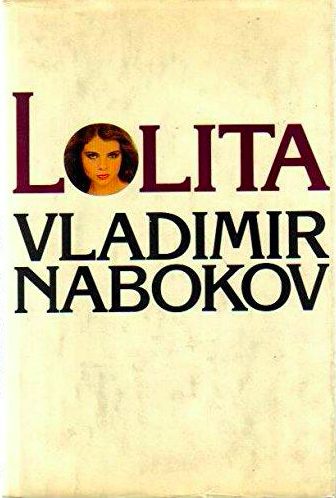
This train of thought brings the emotion of the scene — and the entire book — to a crescendo. We as readers see Humbert in his truest form: delusional and depraved, yet also pitiful. At some level, he believes himself to be so weak that even using a gun cannot help him defeat his rival. The presence of emotion in this scene truly invests the reader in its outcome, no matter how they may feel about the participants’ morality.
Step 5. Resolve (at least for now)
Finally, you’ve reached the end of your fight scene — though not necessarily the end of your story. No matter where it’s located in the narrative arc, a fight needs to be resolved so the story can either move forward or end satisfyingly. This means winding down the action itself and constructing some sort of emotional resolution, even if it’s only temporary.
After the fight scene has ended, think about what would realistically happen next. If your character has a broken rib, they’re not going to just get up and start walking around. They might lie there for a few minutes, gathering their strength, before limping to get medical attention.

NEW REEDSY COURSE
How to Write a Novel
Enroll in our course and become an author in three months.
This transition out of a fight scene is vital because it allows the reader to feel its full impact — the consequences as well as the future implications of the fight. For example, if your main character is critically injured, they’re going to need some time to recover. Indeed, the outcome of a fight can be a major turning point for your plot, so make sure to give it due diligence.
Remember that if you’ve chosen to end your story with a fight scene, or several fight scenes, the fight(s) must resolve all remaining conflicts. Perhaps there’s been a fundamental misunderstanding between characters and the fight scene clears it up, or an act of revenge finally gets carried out. One of the most gratifying resolutions in literature is the encounter between Inigo Montoya and the man who killed his father, at the end of The Princess Bride:
"That was just to the left of your heart." Inigo struck again. Another scream. "That was below your heart. Can you guess what I'm doing?" "Cutting my heart out." "You took mine when I was ten; I want yours now. We are lovers of justice, you and I — what could be more just than that?" The Count screamed one final time then fell dead of fear. Inigo looked down at him. The Count's frozen face was petrified and ashen and the blood still poured down the parallel cuts. His eyes bulged wide, full of horror and pain. It was glorious. If you like that kind of thing. Inigo loved it.
A satisfying resolution is the cherry on top of a well-written fight scene. And with character motivation, descriptive details, good pacing, and strong emotion all in your pocket, you can rest assured that yours is a great one. Congratulations! You’ve successfully learned how to write a fight scene that’ll leave your reader’s heart racing — and their pages turning like the wind.
Have you ever written a fight scene before? How did you do it? Comment below to add your own unique tips!


